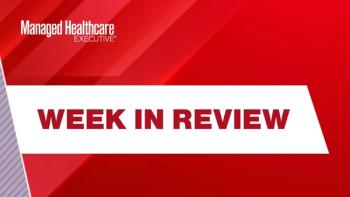
Transparency is key
When there's no rhyme or reason, prices spiral out of control
Journalist Steven Brill has simultaneously become the enemy of some and the hero of many. By now, you’ve probably his read his TIME magazine exposé, in which he tries to uncover the rationale behind the fees billed to underinsured patients.
Brill provides real examples from inpatient statements, such as a charge of $77 for a box of ordinary gauze at Seton Medical Center. He goes on to cite the markup on injectable drugs and compares chargemaster prices to Medicare fees.
For payers and consumers who might see him as a hero, his feature story seems to provide evidence of widespread irrational pricing and outrageous greed on the part of hospitals. For providers, his article seems to outline rare examples of unfortunate situations. It all depends on your perspective.
I recently watched a Web conference presented by the Center for American Progress, in which Brill was a panelist. His ire was clear as he characterized the pricing structure for health services as “an alternate universe.”
He told attendees the underlying driver is that lobbyists in Washington ensure hospital profit margins are preserved. And with the hospitals also being dominant employers in many communities with a mission of healing sick, they remain strong in every congressional district in the country, he said.
“That’s how they can drive the focus on who should pay and not what we should pay for,” Brill said.
He also took to task the executives of well known hospital systems, who often earn compensation packages that outpace other CEOs in their communities. Brill noted, for example, that six midlevel administrators at Sloan-Kettering Cancer Center in New York make more than $1 million annually.
One solution to wrestle down hospital prices, he noted, is pricing transparency-a popular recommendation among most healthcare industry observers but an unpopular one among hospitals. He said that true transparency would mean drug companies would reveal gross profits on their products and hospitals would declare that they charge $77 for a box of gauze and $18 for a single diabetes test strip.
He believes such transparency would create embarrassment and change behavior.
Fellow panelist Ezekiel Emanuel, MD, former White House advisor, agreed that transparency is the key to bringing prices down. Negotiating prices, as private insurers do today, is the wrong way to run a healthcare system as large as the United States’, according to Dr. Emanuel.
Panelists also remarked that the Patient Protection and Affordable Care Act has little hope of bringing prices down. Most dangerous is the leverage hospital systems will continue to have over health plans in contract negotiations. Consolidation has already driven prices up, and the new exchange market with its many health plan participants-each with just a fraction of marketshare-will make negotiations even tougher. More insurers in a market will only mean less leverage, Brill said.
Reduced leverage for plans, aggressive lobbying in Washington and continued fights over who should pay for healthcare will get us nowhere. In spite of political pressure, it’s time to rationalize hospital pricing and make the information public.
Newsletter
Get the latest industry news, event updates, and more from Managed healthcare Executive.

















































